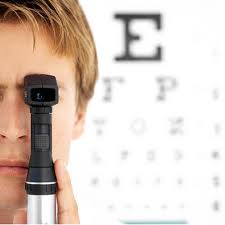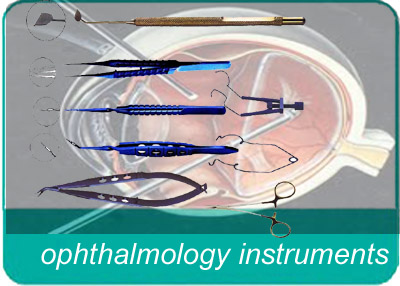Categories
Ophthalmology Equipment & Instruments: Surgical Treatment of Eye Diseases, or How to Protect Your Eyesight

Ophthalmology is a branch of medical science that studies the eyes’ anatomy and functions, and treats their defects (pathology) and diseases. A person specializing in ophthalmology is called an ophthalmologist, which is a specially-trained medical or osteopathic doctor, who provides the full spectrum of eye and vision care, from prescribing contact lenses and glasses to performing delicate and complex eye surgeries. Simply stated, ophthalmologist is a specialist in both medical and surgical eye problems.
Contents
When Should A Person See An Ophthalmologist?
What do we know about the eye? We know that it’s an organ of vision or of light sensitivity. But it is also a fragile organ, which requires extreme care not only during, but also before and after a surgical procedure, if one is necessary. And, usually, these are ophthalmologists who perform eye or ocular surgery, which is any surgical procedure involving eye or its adnexa. But when exactly should you have your eyes examined by an ophthalmologist? And the answer would be “as soon as you have any of the following signs or risk factors for eye disease”, namely:
- eye pain or eye injury;
- misaligned eyes;
- eye bulging;
- red eye;
- decreased or distorted vision (even if temporary);
- black specks or in strings the vision;
- peripheral vision loss;
- double vision;
- excess tearing;
- a veil or curtain blocking vision;
- a family background of eye disease;
- eyelid abnormalities;
- diabetes mellitus;
- high blood pressure;
- AIDS (Acquired Immune Deficiency Syndrome);
- Graves’ disease (thyroid disease-related eye problems).
So, if you have any of the abovementioned signs or risk factors, be sure to visit an expert eye specialist right away. And if you eye problem case should be surgically corrected, then it’s an expert eye surgeon’s responsibility for selecting an appropriate surgical procedure for the patient, as well as taking the necessary safety precautions, the ophthalmic instruments choice being one of them.
Ophthalmology Equipment: Examination & Surgical Ophthalmic Instruments

Every medical branch has its own relevant equipment used for the diagnosing or treatment of patients, ophthalmology out of exception. An average ophthalmologist or eye surgeon also use in their everyday work a lot of ophthalmology instruments, the most common being the following:
- angle-supported intraocular lens (a special intraocular lens implanted surgically into the eye’s anterior chamber);
- automated refraction system (ophthalmic devices (phoropter, controller, eye chart, autorefractor & autolensmeter) for determining a person’s refractive error and aid in the prescription for contact lenses or glasses);
- autorefractor (a computer-controlled device for measuring a person’s refractive error);
- exophthalmometer (an instrument for measuring the eye’s forward displacement degree in exophthalmos (out-of-the-orbit eye bulging);
- eye chart (a chart for measuring a patient’s visual acuity);
- focometer (eye refractive errors measuring device);
- Frenzel goggles (a diagnostic instrument for evaluating an involuntary eye movement);
- Fundus photography (a photograph of the eyes’ interior surface (retina, macula, optic disc, and posterior pole included) to diagnose a disease or monitor its progression);
- gonioscope (used to diagnose or monitor various glaucoma-related eye conditions);
- keratometer (a diagnostic instrument used to measure the curvature of the cornea’s anterior surface);
- keratoscope (an ophthalmic instrument for assessing the shape of the cornea’s anterior surface);
- lens clock (a mechanical dial indicator for measuring a lens’s dioptric power);
- lensmeter (an ophthalmic instrument for verifying the correct prescription of spectacles, properly orienting and marking uncut lenses, and confirming the correct mounting of lenses in frames);
- ocular tonometer (a device for measuring the fluid pressure inside the eye);
- ophthalmoscope (used during eye examination for determining the retina’s health);
- Pascal photocoagulator (a half-automatic pattern scan laser system for treating eye diseases by a predetermined pattern array or a single shot);
- phoropter (an instrument for measuring a person’s refractive error and determining his or her prescription of spectacles);
- pupilometer (a device that can measure the distance between pupils, or their response to visual stimuli);
- retinoscope (an instrument to shine light into an individual’s eye in order to observe the reflection off his or her retina);
- Schiotz tonometer (a device for measuring the intraocular pressure);
- vertometer (an ophthalmic instrument for determining dioptric power of a lens);
- Volk lens (an instrument for examining the tissues of the eye’s posterior segment).
What concerns specific ophthalmic surgical instrument, here we can include the following most common ophthalmology instrument used in general glaucoma of small incision cataract surgery, namely:
- Elschnig’s or Arruga’s intracapsular forceps;
- capsulotomy forceps, disc holding forceps;
- chalazion forceps/scoop, entropion forceps/clamp;
- lacrimal canula;
- bone punch;
- lid plate;
- surgical scalpel with small blades;
- Tookes’ or crescent knife (sclerocorneal splitter);
- angular keratome;
- side-port blade;
- strabismus hook;
- Yttrium aluminum garnet laser (YAG laser);
- electrocautery and many others.
Ophthalmic Equipment Manufacturers & Suppliers
We would like to present you the following list of the most famous ophthalmic equipment manufacturers & suppliers that have already served a good name as companies that are constantly inventing new materials, engineering new technologies, and creating pioneering ways in order to help people see better, and here belong: Alcon, Allergan, Armstrong Optical Services Co., CibaVision, CooperVision, Essilor, Coburn Technologies Inc., Innova, Keeler, Luxottica, Pfizer Canada, Safilo, Transitions Optical, McCray Optical Supply Inc., Volk Optical Inc. and others.



